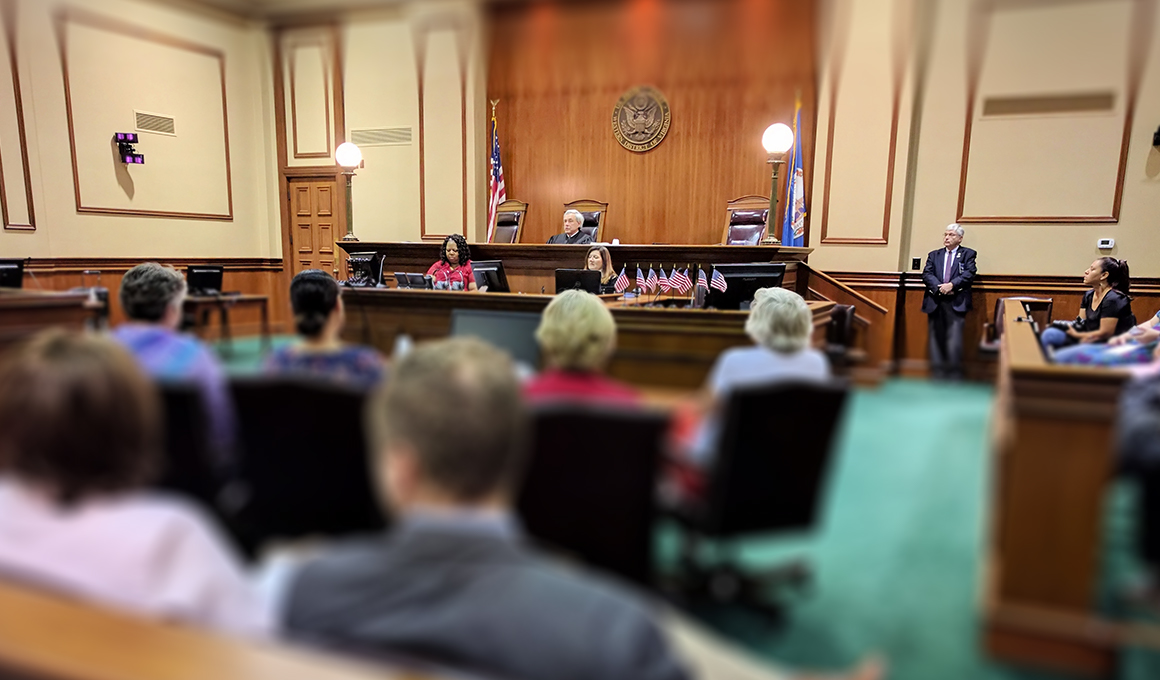Captivate the Court: Necessary Elements of a Powerful Test Discussion
Essential components such as recognizing the target market, crafting a compelling story, and grasping verbal and non-verbal communication are essential elements of an efficient presentation. As these elements intertwine, they develop a natural technique that not just notifies however additionally engages jurors on numerous levels.

Understanding Your Audience
Recognizing your audience is a critical facet of reliable trial presentation. An effective presentation rests on the ability to grasp the demographics, worths, and predispositions of jurors. This understanding informs exactly how arguments are mounted, proof exists, and psychological appeals are crafted, guaranteeing that the message reverberates with the jurors on a personal degree.
Research shows that jurors come from diverse backgrounds and may have differing degrees of understanding regarding legal proceedings. Additionally, understanding the jurors' possible prejudices and life experiences allows the test presenter to prepare for arguments and address issues proactively.
Effective trial presentation additionally entails observing jurors' responses during the process. Being attuned to non-verbal signs can provide understanding into their interaction and receptiveness, enabling real-time changes in approach. Inevitably, a profound understanding of the target market not just improves communication yet likewise develops relationship, increasing the probability of a positive end result. Engaging with jurors as people as opposed to a cumulative system is necessary in promoting a strong connection in the court.

Crafting a Compelling Story
Crafting a compelling narrative is essential in guiding jurors via the intricacies of a case. A well-structured narrative not only streamlines intricate legal principles yet likewise engages jurors on a psychological degree, making the information much more relatable and unforgettable.
This message needs to reverberate with the jurors' values and experiences, promoting a link that goes beyond simple realities. This sequential approach can assist jurors adhere to the development of events, emphasizing cause and result.
Incorporating human aspects-- such as personal tales or anecdotes-- can even more improve the story's effect. These components evoke empathy, allowing jurors to envision the repercussions of the case on real lives. Furthermore, employing a consistent style throughout the presentation strengthens the primary debate, making it less complicated for jurors to keep crucial points.
Inevitably, a compelling story transforms a trial presentation from a simple recitation of realities into an influential tale that astounds the jury, encouraging them to mull over with both factor and feeling.
Making Use Of Aesthetic Help
Including aesthetic help right into a test discussion can significantly boost jurors' understanding and retention of details. Aesthetic materials such as charts, layouts, photos, and videos can change intricate lawful concepts and evidence into quickly digestible formats. By engaging several detects, these aids permit jurors to envision the case's essential components, making it easier for them to comply with along and understand intricate information.
Moreover, well-designed aesthetic aids can highlight critical factors and emphasize relationships in between various items of evidence. As an example, timelines can successfully illustrate the series of events, while annotated photos can clarify certain details pertinent to the case. This not only help in understanding but additionally strengthens the story presented by the lawyer.
Overly complicated or cluttered visuals may bewilder jurors and take away from the message. Get More Info Ultimately, effective visual communication can be an effective tool in convincing jurors and assisting them get to notified verdicts.
Understanding Verbal Interaction
Reliable verbal communication is vital in a test discussion, as it offers as the primary ways with which attorneys convey their disagreements and link with jurors. Simpleness in language fosters understanding and assists jurors realize complex concerns offered during the test.
Furthermore, tone and pacing significantly effect how messages are obtained. A certain tone shares authority, while ideal pacing permits jurors to soak up details without really feeling bewildered. Attorneys must likewise differ their singing inflections to stress key factors and keep jurors' passion throughout the discussion.
Furthermore, the organization of verbal arguments is crucial. Structuring the narrative logically and coherently helps jurors adhere to the lawyer's line of thinking, making it less complicated for them to preserve critical details. Making use of influential strategies, such as storytelling, can likewise improve the emotional vibration of the debates provided, thus developing a more extensive link with jurors.
Eventually, understanding verbal interaction not just strengthens an attorney's case yet additionally promotes trust and rapport with the court, substantially boosting the opportunities of a desirable judgment.

Engaging With Body Movement
Nonverbal interaction plays a vital function in test presentations, typically communicating messages that words alone can not share. Body language, encompassing gestures, stance, faces, and eye contact, substantially affects exactly how jurors view the trustworthiness and sincerity of the speaker. A confident stance, with shoulders back and an open stance, can impart trust fund, while closed-off body language might recommend defensiveness or uncertainty.

Face expressions need to reflect the emotions connected with the case, reinforcing the story being offered. For instance, a sincere expression during a touching minute can elicit empathy and enhance the psychological appeal. Ultimately, mastering body movement is important for effective test presentations, as it enhances spoken interaction and establishes a compelling presence that resonates with the jury.
Verdict
To conclude, captivating the jury demands a strategic strategy that incorporates understanding the target market, crafting an engaging story, utilizing aesthetic help, mastering verbal communication, and involving through body language. Each aspect plays a vital here duty in producing an effective trial discussion that reverberates with jurors on both emotional and intellectual degrees (trial presentation). By incorporating these parts properly, attorneys can substantially boost their capacity to encourage and influence jury decision-making